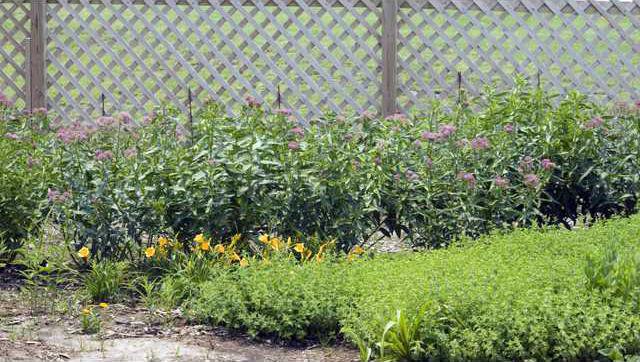It’s been a long winter but spring is upon us even though it seems fleeting. At Cheyenne Bottoms, waterfowl have been coming and going since mid-February, a few early shorebirds have arrived and some of the perennial plants are sending out tentative shoots.
The yarrow and Autumn Joy sedum are beginning to grow in the Kansas Wetlands Education Center’s wildflower/pollinator garden, which means it will soon be planting time. Gardeners, like farmers, are optimists. Why else would they continue during adverse conditions? At KWEC we’ve battled extreme drought conditions, poor soil and grubs. Although grubs are larval forms of some interesting beetles, it’s hard to be charitable when they eat roots and kill plants nurtured through those terrible drought conditions. So any grub found in the KWEC garden is a dead grub!
Despite the harsh conditions over the past three years, several flower species thrived – yarrow, blazing star, Indian blanket flower, mint, coreopsis and swamp milkweed. These species, all native to this area, have developed strategies to survive drought conditions.
Blazing star, also known as gayfeather, is a good example. An account from a traveler’s diary, passing through Kansas during 1936, reported only two plants that “appeared unhampered by drought”, one of which was blazing star. During its first year of growth, it can attain a taproot of 33 to 38 inches.
In addition to having a lacey lavender flower spike that makes a great dried flower, it’s favored by bees and other pollinator insects. Most native broadleaf flowers are important nectar and pollen sources for pollinators, which is another great incentive to plant native.
Many insect pollinators are struggling to survive. The honey bee has suffered devastating losses for several years and native bee species are in the same situation. For humans, this problem could lead to increased food costs and decreased availability of fruits and vegetables. From almonds and strawberries to alfalfa, without bees, there’s no pollination, thus no seed and fruit formation. According to a Cornell University study, bee pollination’s value to U.S. agriculture is more than $14 billion annually.
The amazing migration of the monarch butterfly is also endangered, due to a decrease in native nectar sources and the monarch caterpillar’s food source, milkweed. This winter, the number of overwintering monarchs in Central Mexico was the lowest in nearly 25 years of record keeping. For the past 10 years, the population has been decreasing, which has been correlated to decreases in milkweed plants and habitat loss. The widespread use of genetically modified corn and soybeans has resulted in clean fields absent of milkweed that used to grow with these two crops.
Ordinary citizens can help make up for these losses by planting native flowers. The bees and monarchs will find the plants even if there are only a few in a yard.
Some native plants can be purchased locally at nurseries and others at special plant sales. Dillon Nature Center, Hutchinson, hosts the Lesser Known Lovelies plant sale April 25, 6:30-8 p.m. (for members) and April 26, 8 a.m. until sold out, for the public. Dyck Arboretum, Hesston, holds a spring plant sale, FloraKansas, for members April 24, and April 25-28 for the public (dyckarboretum.org).
You are welcome to call or stop by KWEC to view the garden and get information about planting native flowers and grasses. The bees and butterflies will thank you.
Wetland Explorer
Go native: Plant native flowers





